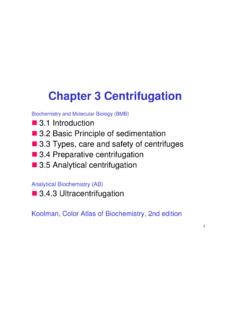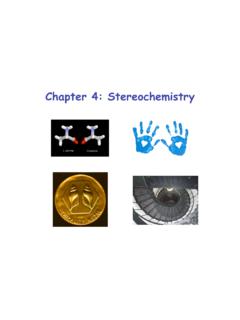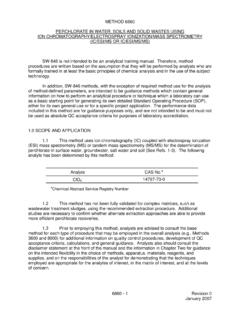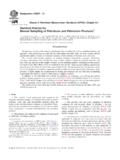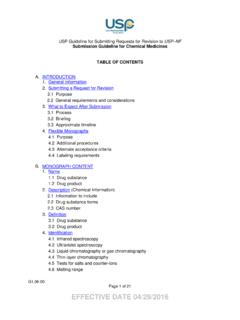Transcription of Chapter 3* - Selection of water quality variables - …
1 water quality Assessments - A Guide to Use of Biota, Sediments and water in Environmental Monitoring - Second Edition Edited by Deborah Chapman 1992, 1996 UNESCO/WHO/UNEP ISBN 0 419 21590 5 (HB) 0 419 21600 6 (PB) Chapter 3* - Selection of water quality variables *This Chapter was prepared by D. Chapman and V. Kimstach Introduction The Selection of variables for any water quality assessment programme depends upon the objectives of the programme (see Chapters 1 and 2). Appropriate Selection of variables will help the objectives to be met, efficiently and in the most cost effective way.
2 The purpose of this Chapter is to provide information which helps the appropriate Selection of variables . Each variable is discussed with respect to its origins, sources, behaviour and transformations in the aquatic system, the observed ranges in natural and polluted freshwaters, the role of the variable in assessment programmes, and any special handling or treatment of samples that is required. The final section of this Chapter suggests some combinations of variables which might be used for different water quality assessment purposes.
3 These can be used as a basis for developing individual programmes. The methods employed to measure the selected variables depend on access to equipment and reagents, availability of technical staff and their degree of expertise, and the level of accuracy required by the objectives of the programme (see Chapter 2). A summary of the principal analytical methods for major variables is given in Table and a summary of pre-treatment and storage of samples for different analyses is given in Table Detailed descriptions of sampling and analytical methods are available in the companion volume to this guidebook by Bartram and Ballance (1996) and in a number of standard reference guides published by various international organisations and programmes, or national agencies ( Semenov, 1977; WHO, 1992; NIH, 1987-88; Keith, 1988.)
4 APHA, 1989; AOAC, 1990). In addition a world-wide federation of national standards bodies and international organisations, the International Standards Organization (ISO), publishes a series of approved International Standards which includes methods for determining water quality . Further detailed information on the study and interpretation of chemical characteristics in freshwaters is available in Hem (1989), Environment Canada (1979) and many other specialist texts. Hydrological variables Determining the hydrological regime of a water body is an important aspect of a water quality assessment.
5 Discharge measurements, for example, are necessary for mass flow or mass balance calculations and as inputs for water quality models. Table Analytical methods for determination of major chemical variables Simple Advanced Sophisticated variable Gravimetric Titrimetric Visual PhotometricElectrochem. probe Flame photometryUV-VIS and IRFluorimetryAESAAS GCFlow injection Stripping VA ICP-AES IC LCGC/MSResidue L Suspended matter F FL Conductivity FL pH F FL
6 Acidity, alkalinity L Eh F Dissolved oxygen L F CO2 L F Hardness L
7 Chlorophyll a L LFL Nutrients F L FL L L Organic matter (TOC, COD, BOD) L FL L Major cations F FL L L L Major L F L FL L anions Sulphide L L
8 L Silica L Fluoride L FL L Boron L Cyanide L L L Trace elements F L L LL L L Mineral oil L LL Phenols L L LL Pesticides L L L Surfactants F
9 L L Other organic miicropollutants L L LL F Field methods L Laboratory methods TOC Total organic carbon COD Chemical oxygen demand BOD Biochemical oxygen demand UV-VIS Ultraviolet and visual spectrophotometry IR Infra-red spectrography AES Atomic emission spectrophotometry AAS Atomic absorption spectrophotometry GC Gas chromatography VA Voltammetry ICP-AES Inductively coupled plasma atomic emission spectrometryIC Ion chromatography LC Liquid
10 Chromatography GC/MS Gas chromatography/mass spectrometry Table Pretreatment and storage requirements of samples for laboratory determination of chemical variables (see text for further details) Pretreatment Type of bottles Conditions of storage Max. time of storage prior to analysis variable None Filtration Chemical stabilisation Acidification Alkalinisation Solvent extractionGlass PolyethyleneDarkCold (approx. 4 C)Frozen (max. -15 C)Minimum possible 24 hours 3 days 1 week 3 weeks Residue x x x Suspended matter x x x x x Conductivity x x x x PH x x x x












